What to do if cucumbers have pale leaves, how to feed
In the process of caring for cucumber seedlings, gardeners may notice that in some plants the tops lose their rich green color, and the vine itself becomes lethargic over time. Why do cucumber leaves turn pale, and what can this effect be associated with - the quality of soil fertilizers, the frequency of watering, or an unsuccessfully chosen variety of seeds?
Why do cucumber leaves turn pale
The main reason for pale foliage in cucumbers is called a deficiency or, on the contrary, an excess of some micro and macro elements. In most cases, an imbalance in the balance of nutrients entails a deterioration in the growth and presentation of cucumbers, but after taking appropriate measures, the fruiting of damaged bushes is fully restored.
Blanching of cucumber leaves occurs when the following elements are lacking:
- Nitrogen. The deficiency of this substance is reflected in the development of seedlings and the modification of all elements of the tops - weak formation of lateral lashes and leaves, the fall of inflorescences without the formation of green ovaries, but the most revealing point is the spread of yellowness on mature leaves of seedlings. If you do not make timely nitrogen fertilization, the upper leaves begin to turn yellow and, last of all, those that are above the first two shoots. It is possible to differentiate the lack of nitrogen in cucumber seedlings according to a peculiar pattern of covering the leaf with pale yellowness - the veins remain green until the last moment and lose their color before falling off.
- A decrease in the activity of photosynthesis with a lack of iron is immediately detected in the form of a loss of green color in young plants. Further inaction results in the appearance of a dry edge around the perimeter of the damaged leaves, and the "washout" of the intense green color passes to mature leaves. The yield of cucumbers does not suffer from iron deficiency.
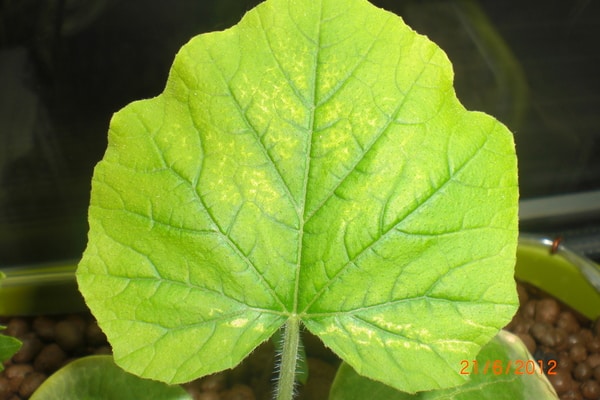
- Calcium. Already formed leaves almost do not react to a lack of calcium, but the young leaves released are entirely very small and have an unnaturally dark shade of green. After a short time, new leaves begin to lose color at the edges and from the center. Pallor spreads in stripes along the surface of the leaf, without affecting the veins, then these areas die off, and the damaged edges are bent downward.
- Light green, and then almost colorless tops of the leaves, with a parallel wilting of the entire plant, indicate a lack of copper.
- The fact that the leaves on the plant first began to turn yellow, and then acquire a brownish tint and shrivel, indicate a potassium deficiency. The presence of a large amount of peat in the soil composition will aggravate the progression of leaf damage with a lack of potassium.
- Phosphate starvation stops the growth of a cucumber bush - the vine stops reaching up, and the leaves on it become small and tough, like leathery. Soon, the modified leaves are covered with pale green spots, similar to water stains, and fall off.
With excessive enthusiasm for boron-containing dressings, the gardener risks leading the planting to irreversible changes and the death of the entire crop. The first sign that you should urgently stop using boron will be the acquisition by mature leaves of a rich yellow color around the edges. Soon, the yellowness spreads to the center in the form of spots that begin to dry out and wrinkle the leaf. Feeding the plant with any kind of fertilizer must be temporarily stopped.
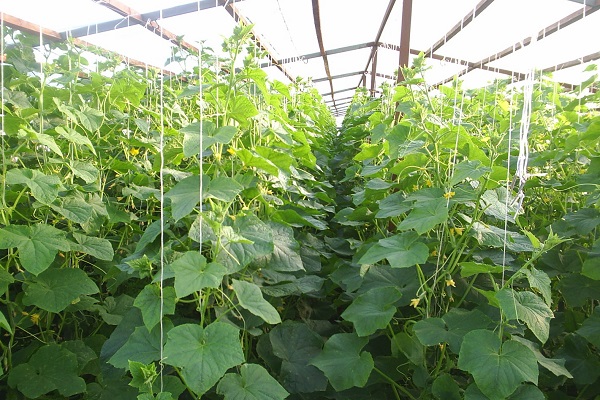
Why do cucumber seedlings lose their green color - other reasons
What if the pallor of the leaves in cucumbers is noted during the period of active growth and development of the bush? First of all, determine the cause, and then act in such a way as not to reduce the fruiting of plants:
- Planting cucumbers too early in open ground. If you transfer cucumbers to a permanent place of cultivation, when the warmth of the soil has not reached the required temperatures, the leaves on the seedlings can not only brighten, but also fall off. The only way to fix the problem is to make a mobile tunnel greenhouse on arched racks directly above the garden bed until the ground is warm enough.
- Excessive amount of organic matter in the fertilizer. You should temporarily abandon nutrients such as chicken droppings. How to feed the cucumbers in this case? It is best to use neutral mineral fertilizers - ash or bread solutions.
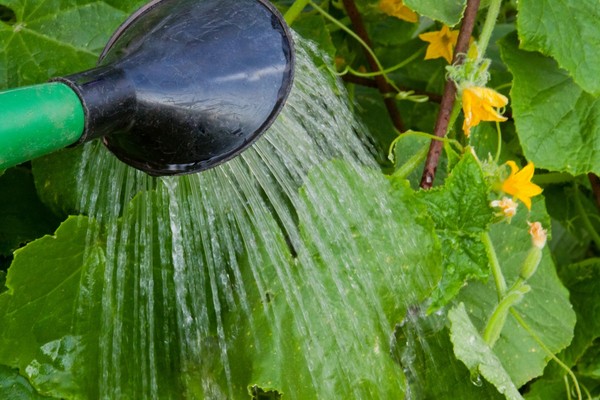
- Lack of moisture in the soil or cold watering. The reason for the blanching of plants may lie in irregular watering or freezing of the roots under the influence of cold tap water. The situation can be corrected by establishing an accurate irrigation schedule and using insulated and settled water for these purposes.
- Excessive number of ovaries on the lashes. Green fruit formations draw out the vitality of the plant, causing the seedlings to become sluggish, and the entire plant loses its color intensity. The number of fruit units should be reduced by distributing them evenly along the lashes, in descending order to the top.
Pinching the ovaries is a very important moment in the formation of a fruit bush. On average, it is believed that one plant should not have more than 23 ovaries at a time, otherwise it will not cope with the load and will start to fade.

Causes of leaf blanching - seedling diseases
Seedling diseases, leading to the loss of the color of the green part of the plant, often occur in cucumbers in a greenhouse, since fungal and viral infections spread faster in a stuffy and humid atmosphere. Caring for plants in a greenhouse is further complicated by the fact that it is necessary to monitor the constant flow of fresh air.
There are five most common cucumber diseases seedlings, due to which the leaves of plants become pale:
- Mosaic disease. With this disease, which affects cucumbers both in the greenhouse and in the open field, the leaves of cucumber seedlings are covered with a spotted pattern of yellowish or pale color. Then the leaves of the cucumbers are tucked around the edges and shriveled. The disease spreads when planting infected seed or when diseased plants come into contact with healthy ones. It is impossible to cure the damaged part. With an insufficiently large area of coverage of the disease, the damaged areas are removed, and the whole plant is irrigated with milk of 1% fat content. Severely affected cucumber seedlings should be removed and the soil disinfected.

- Powdery mildew is a whitish, calcareous-like coating that covers the green leaves of cucumbers, mainly outdoors. The disease is activated in wet weather with strong winds, watering or rain, and it spreads not only to the leaves of the plant, but also to the stem of the vine and even to nearby crops. If the leaves of the cucumbers have characteristically turned pale in a greenhouse, then excess moisture or poor soil treatment before planting is to blame. Plants are cured with a composition of mullein and urea, taken in a ratio of 1: 50.
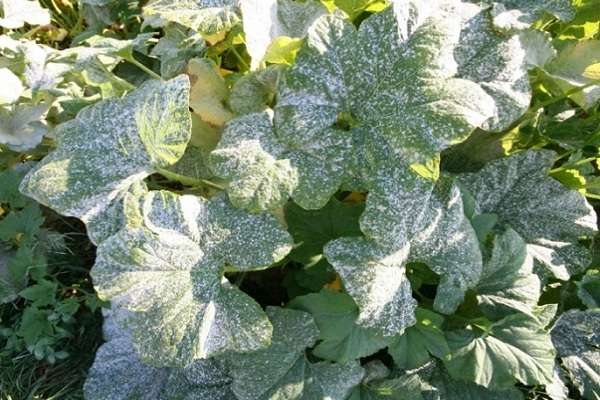
- Peronosporosis. The principle of covering the leaf with bloom in case of peronosporosis resembles the signs of powdery mildew, only the color of the bloom is not white, but yellowish on the upper plate of the leaf and grayish on the bottom. When the gardener is inactive, the spots characteristically darken, and the leaf is deformed and dries. Causes of the disease: firstly, excessive watering, and secondly, unstable temperatures of the air or irrigation water. Fighting the fungus includes: limiting soil moisture until the complete cessation of watering, removing damaged leaves and spraying the whole cucumber with Oxyhom solution (two tablets per bucket of water).
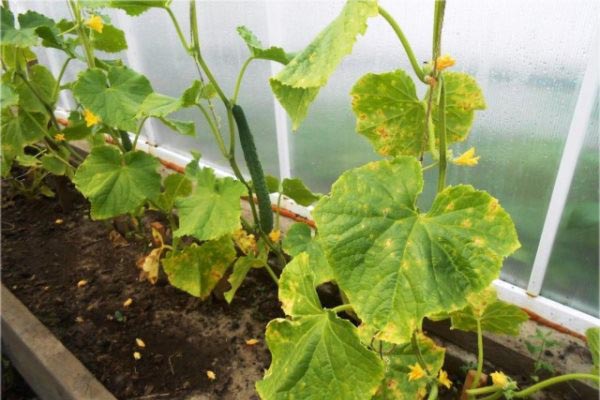
- Root rot. The fungus spreads to the plant from the roots, and first covers the lower layer of leaves with pale yellowness, and then moves to the next. Following the defeat of the leaves, the entire lash begins to die off, and the plant dies - rots at the root. The causes of the disease are called excessive watering, a thickened planting, in which fungal spores pass from a sick cucumber to a healthy one, as well as high humidity and stuffiness in the greenhouse. Pale leaves should be removed immediately, and diseased plants should be sprayed with Infinito 61 SC solution.
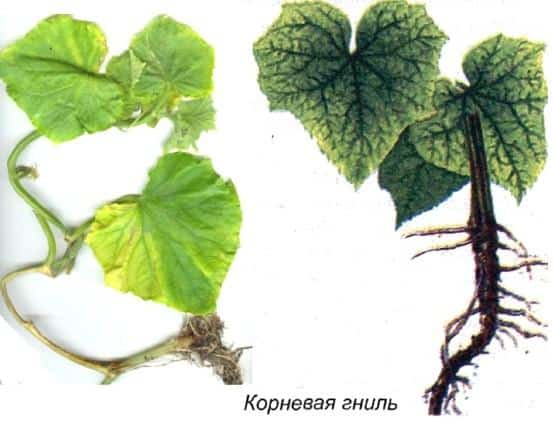
- White rot is another reason that the leaves on the cucumbers turned pale. The fungus can be found under the lower lashes of cucumbers, closer to the roots - jelly-like weeping spots appear there, which later become covered with white fluff. White rot quickly spreads over the liana, affecting the stem and most of the leaves. Green ovaries can also become white, especially those hanging on the lower lashes. The fight against rot begins with the removal of the damaged areas of the plant that have turned white, and, with a small area of the affected area, sprinkling the cucumber bush with a dry mixture of chalk and lime. Plants completely affected by the disease will have to be removed.
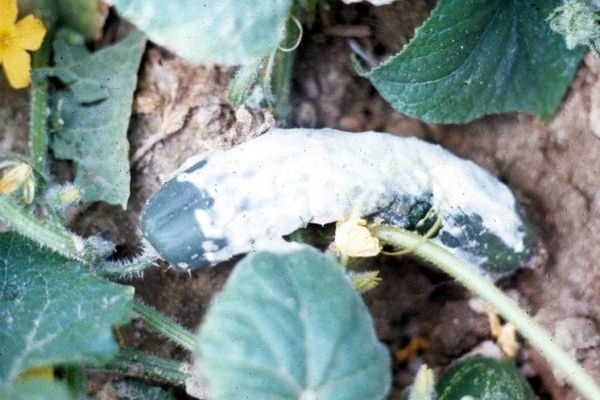
With close plantings, typical of greenhouse cultivation, not only diseased plants are examined and treated with solutions, but also all those in the immediate vicinity.
In the case when the disease is passing through the soil, that is, all types of fungal infections, special attention is paid to disinfecting the soil at the site of the removed bush.
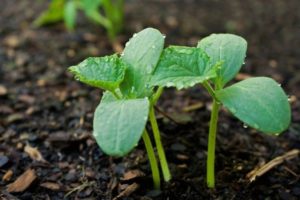
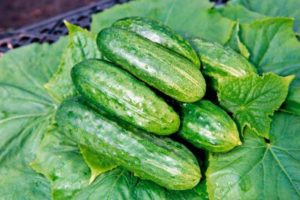





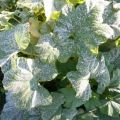
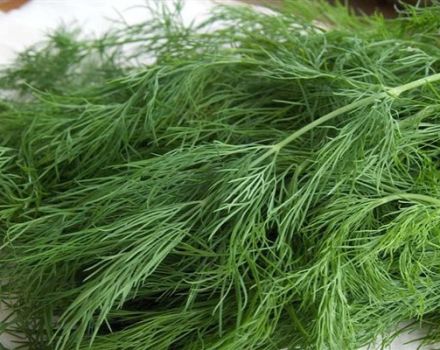

For feeding cucumbers I only use the product "BioGrow". It costs a little and acts on the seedlings immediately, cucumbers recover very quickly. I have not yet seen a worthy analogue.